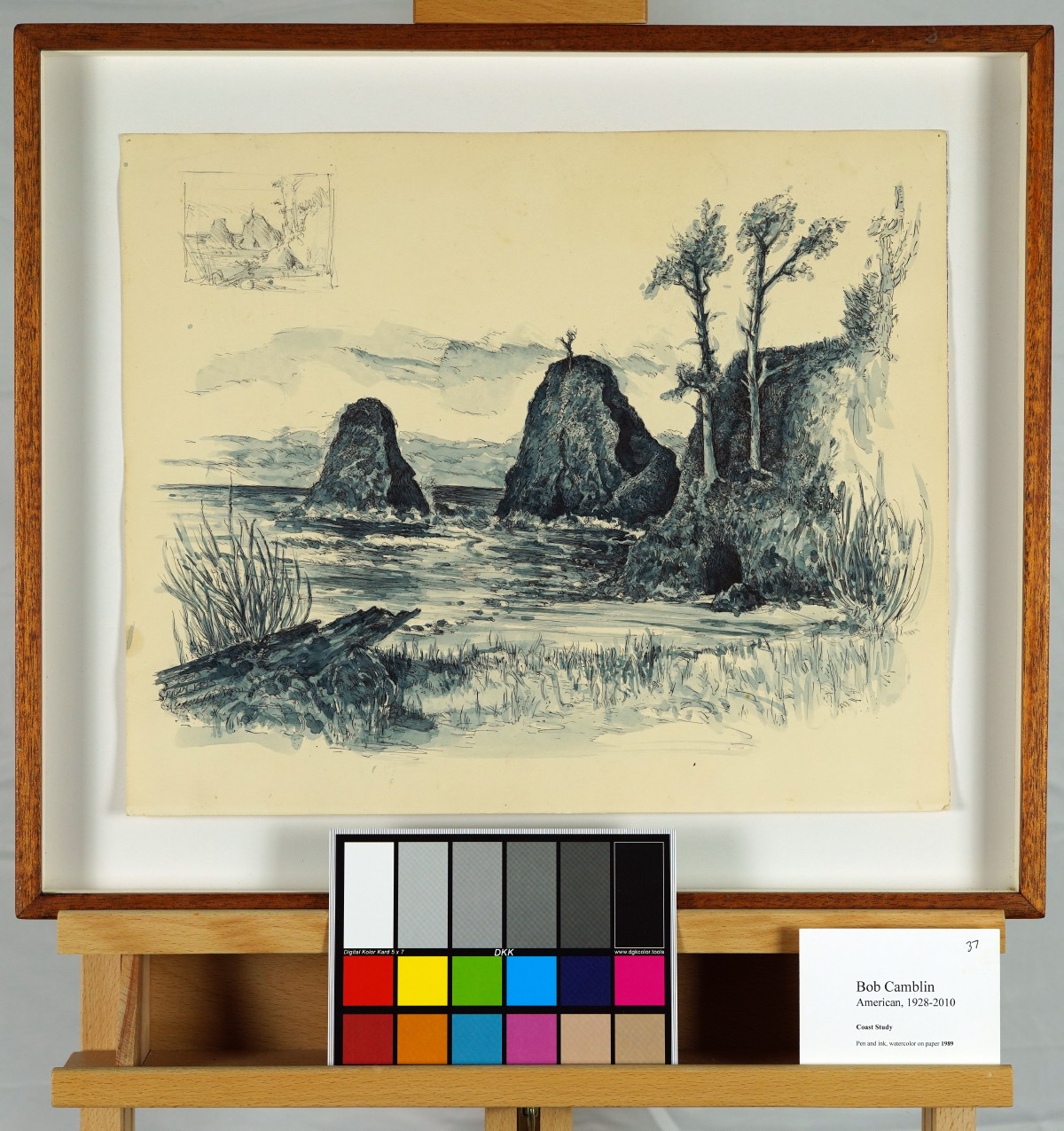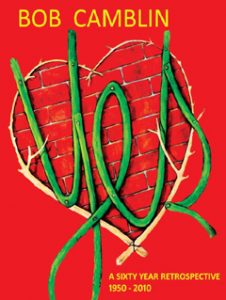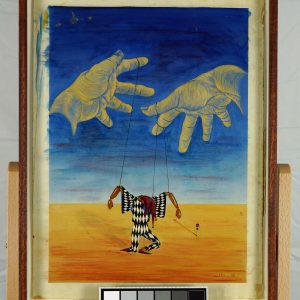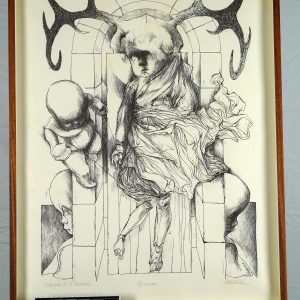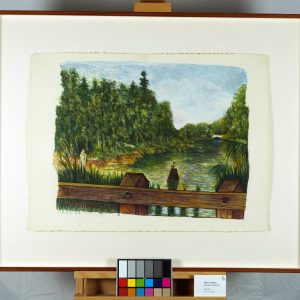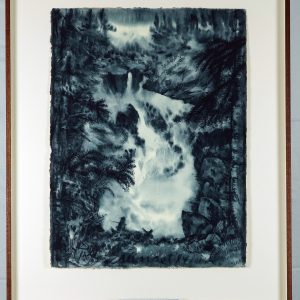Description
Coast Study, 1990Pencil/watercolor on Arches
Signed
13 x 16 in (image)
18 x 21 in. (frame)
original, includes certificate of authenticity from ArtTrust
The sketch “Coast Study” is a monochromatic ink drawing depicting a coastal scene with prominent sea stacks—tall rock formations jutting out of the water—and a rugged cliffside. Trees grow atop the rocky cliffs, their sparse branches reaching out against the sky. The detailed textures of the rocks and waves convey a naturalistic scene that captures the wildness of the seashore. A smaller sketch in the upper left corner appears to be a preliminary study or a different perspective of the scene.
In Zen, the sea often symbolizes the vastness of the mind, while the rugged rocks and trees represent the enduring nature of existence amidst constant change. The scene encourages mindfulness and the acceptance of nature’s raw beauty. The artwork conveys a state of equilibrium—reflecting the Zen principle of harmony in opposites, such as solidity (rock) and fluidity (sea). The distant horizon invites contemplation on the boundlessness of life and the self, promoting a meditation on interconnectedness and impermanence.
In the I Ching, water symbolizes the element of “Kan” (the Abysmal), which signifies danger and depth. The rock formations could correspond to the trigram “Mountain” (Ken), representing stillness and stability. Together, they might form Hexagram 39 (“Obstruction”), indicating challenges or obstacles that one must navigate with perseverance. The interplay of elements suggests a journey of overcoming difficulties by remaining grounded and adaptable, much like the cliffs that withstand the unending waves.
Combining the Zen and I Ching interpretations, the artwork suggests resilience in the face of life’s ebbs and flows. The sea and rocks mirror the spiritual path’s challenges and the mind’s steadfast nature. It portrays the need for balance—remaining firm like the rocks while yielding like water. The smaller inset sketch hints at different perspectives one can take, representing the ever-shifting view of life’s experiences.
The technique used in the drawing is reminiscent of traditional Chinese landscape paintings, which often depict mountains, water, and trees to convey the unity of nature. The use of monochromatic ink places emphasis on texture and line rather than color, allowing the artist to explore mood and atmosphere. This style aligns with the 19th-century Romantic era in Western art, where artists aimed to depict nature’s sublime and dramatic qualities. The placement of the elements and the use of emptiness in the sky also connect to Eastern approaches to landscape art, where balance and composition carry symbolic weight.
*Shipping cost will vary, please inquire at sales@camblingallery.com before purchasing.
Currently ships from Oregon, USA
Member of artnet? Apply for a discount! Inquire about intergallery and permanent loans for museums.
“Coast Study” was featured in his Yes Retrospective.
Reproductions of this drawing are available in multiple sizes!
Click here to use our high-resolution viewer!
This artwork is available with a non-fungible token to ensure traceability and transparency of provenance.
The royalty factor – Unlike traditional artworks, such as paintings, mosaics, statues, and the like, NFTs can be programmed to provide royalties to you every time the painting (and token) is sold and resold – for eternity. That mind-bending Camblin you sold could be worth millions one day and provide income for your great-great-great grandkids!
Anti-forgery – The central idea underpinning NFTs is that they are built on the blockchain, which is meant to offer advanced security. Think of it like an un-erasable and un-avoidable copyright.
Easy authentication – Another compelling aspect of NFT art and NFTs in general is the ability to quickly and easily authenticate items, as the record of ownership is scrupulously kept on the blockchain.
